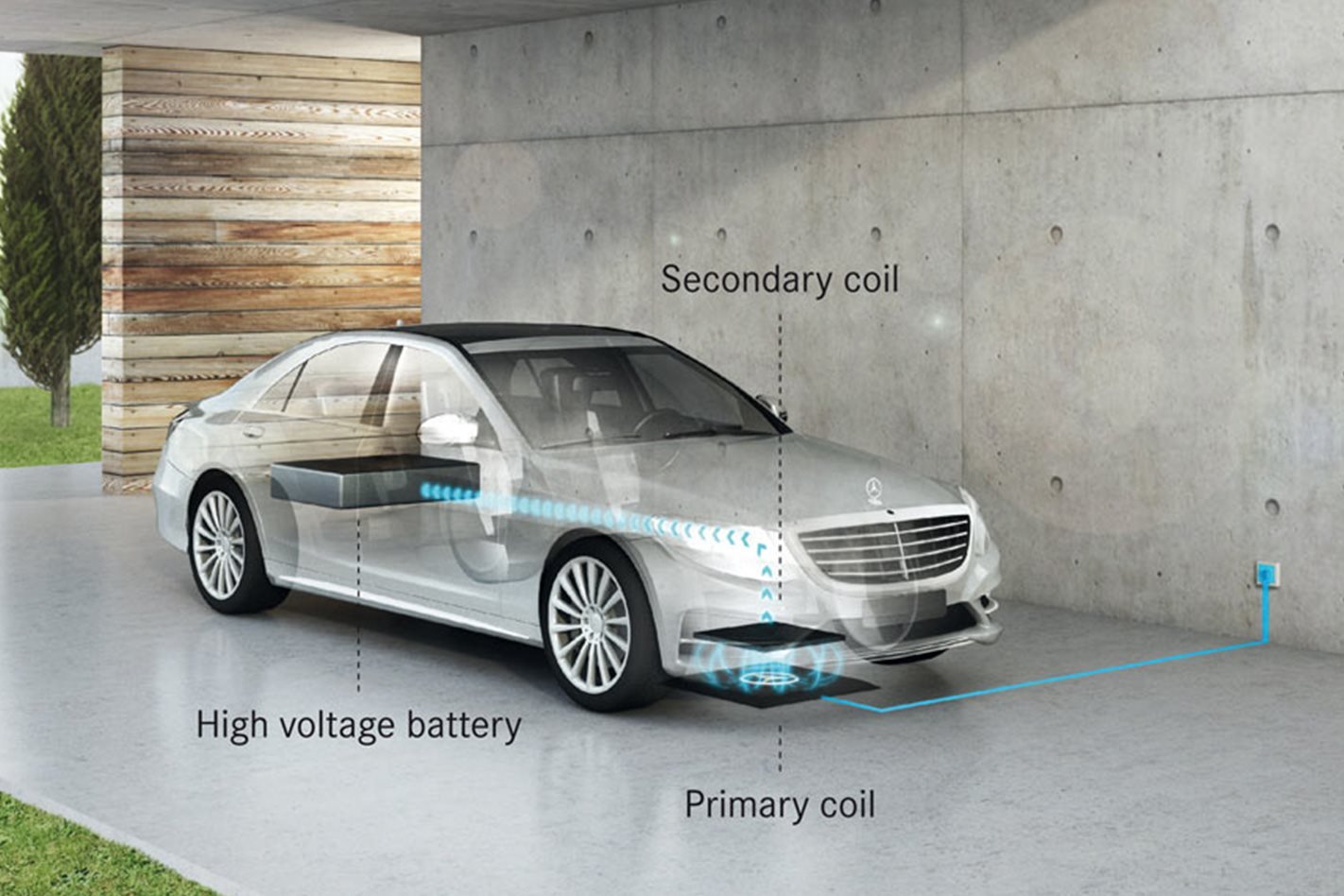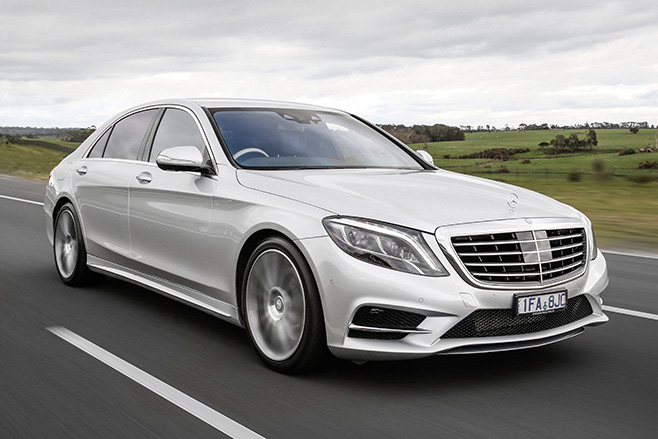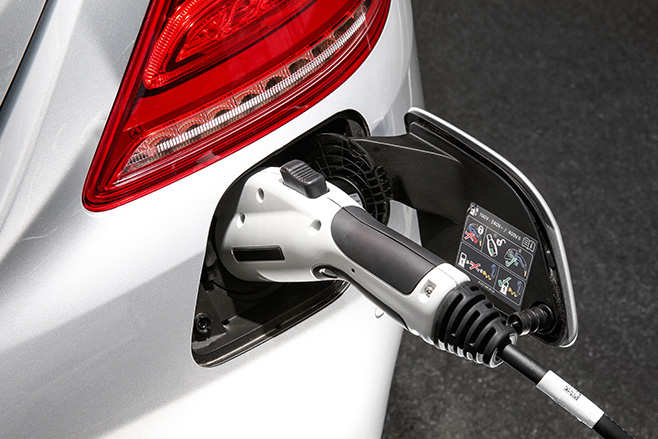
Until now, owning a plug-in hybrid vehicle (PHEV) meant you always have to plug it into a wall socket or fast charging station to get the maximum fuel-saving benefits that part-time electric cars can offer.
However, Mercedes-Benz has announced it will soon start selling a kit that allows PHEV owners to charge their vehicle wirelessly – no sockets or cords means you just park the car to start recharging.
The technology is being rolled out as part of a mid-life update to a PHEV version of Mercedes-Benz’s flagship S-Class limousine, the S550e. The S500e currently pairs a twin-turbo 3.0-litre V6 engine with a plug-in hybrid electric motor that can sip as little as 4.5 litres per 100 kilometres in city driving in its most fuel-efficient mode.
The “Halo” at-home wireless charging technology is being adapted from a similar system designed by telecommunications company Qualcomm to recharge the BMW i8 safety car used in the Formula E battery-powered race car series.

The company says the wireless charger will work at just 3.6kW, which is powerful enough to charge the S550e’s 13.5-kWh battery pack overnight.
However, in order to use the system at home, it will need to be professionally installed.
Wireless (or inductive) charging is already available for computers and smartphones. However, Halo will be the first major factory-available production system for vehicles.
In the past, hurdles such as slow charging speed, high cost, and safety concerns have prevented the systems becoming more widespread.
Other versions of the inductive charging system needed the cars parked within a 2.5cm area around a floor-mounted charging pad to work. However, it is believed the Qualcomm system being developed for Mercedes-Benz is less fussy, allowing gaps as large as 15cm.

“A huge amount of work went into finding the technical sweet spot, from a compliance and harmful radiation standpoint, and from a technical standpoint of the vehicle,” said Anthony Thomson, Qualcomm’s business development and marketing vice-president.
The system is designed to prevent children or pets being exposed to potentially harmful high-energy magnetic fields, and is able to shut down if it senses something is too close.
The team at Qualcomm is also working on upgrading the speed of the system so that it will also be able to recharge pure electric vehicles that have larger batteries.
While Mercedes-Benz is likely to be the first car manufacturer to offer an inductive charging system, others including Tesla are looking into it.
According to Qualcomm, the wireless recharging unit will also help carmakers develop the fully autonomous vehicle. “In the long term, it marks an important step in making self-driving cars truly autonomous – you cannot call a car ‘autonomous’ if it cannot fuel/recharge itself,” it said.
Audi recently flagged it will have its first fully autonomous car on the market as early as next year.




